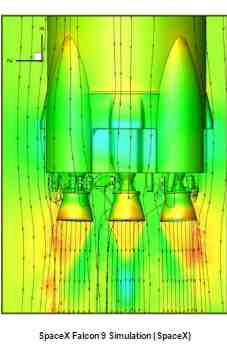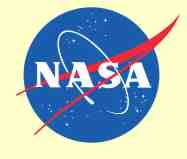| NASA High Performance Fast Computing Challenge |
| Written by Sue Gee | |||
| Monday, 08 May 2017 | |||
|
At first glance the contest NASA has launched to get help in speeding up its computational algorithms seem an interesting challenge. Then you notice it's restricted to US citizens, over 18, and there's an authorization process before you can download the code.
The goal of this challenge, now live on the TopCoder and HeroX platforms is to modify the specialized computational fluid dynamics (CFD) algorithms that NASA runs on its Pleiades supercomputer.
The overview on the NASA Tournament Lab asks: Do you want to help aerospace engineers solve problems faster? Does the phrase “nonlinear partial differential equations used for unsteady computations” excite you? Do you want to try yourself with the complex computational software that NASA scientists use? and in this video Dr Michael Roger, Project Manager of NASA's Transformation Tools and Technologies Project, part of NASA's Aeronautics Research Program says he is looking for a 10 to 1000 times increase in the speed of computation of it's FUN3D software.
There are two challenges running in parallel between now and June 29. The Architecture one is on TopCoder unti with two prizes of $15,000 and $10,000. According to TopCoder in it contestants need to: Show us how to optimize individual software module code and/or inter-node processing in order to reduce overall model computation time and parallelization efficiency. Ideal submission may include algorithm optimization of the existing code base, Inter-node dispatch optimization or a combination of the two. Unlike the Ideation challenge, which is highly strategic, this challenge focuses on measurable improvements of the existing FUN3d suite and is highly tactical. The Ideation challenge on the HeroX platform has a First place prize of $10,000 and two runner up prizes of $5.000 and involves: Optimizing source code to improve NASA’s FUN3d Computational Fluid Dynamics suite in such a way that flow analysis that previously took months to compute can now be done in days or even hours. We are hoping this challenge will identify ideas that will improve FUN3D to complete complex flow analysis 1000x faster. We think there are several approaches to finding solutions that will help NASA achieve 1000x performance improvement and they don’t all require you to be an aeronautical engineer. Ideas and approaches may include, but are not limited to exploiting algorithmic developments in such areas as grid adaptation, higher-order methods and efficient solution techniques for high performance computing hardware. To participate in this challenge you first have to apply for access to FUN3D software, the suite of Fortran fluid dynamic programs used by NASA and aeronautics companies like Lockheed and Boeing, for through an application process with the US Government.
Some background about this software explains why NASA is turning to crowd sourcing: FUN3D was born in the late 1980s as a research code. The code’s original purpose was to study existing algorithms and to develop new algorithms for unstructured-grid fluid dynamic simulations spanning incompressible flow to transonic flow. The project has since grown into a suite of codes that cover not only analysis, but adjoint-based error estimation, mesh adaptation, and design optimization of fluid dynamic problems extending into the hypersonic regime. For FUN3D, you will need a Fortran 2003 compiler. This code has gone through an extensive cleanup/overhaul over the past few years to lay a solid foundation for the extension to flows in thermochemical non-equilibrium, and is considerably easier to use and modify than ever before. Considering the value to NASA of the speed optimization they are hoping for the total prize pool of $55,000 seems somewhat exploitative especially as the rules of the Ideation contest include: Innovators who are awarded a prize for their submission must agree to grant NASA a an irrevocable, royalty free, perpetual, sublicensable, transferable, and worldwide license to use and permit others to use all or any part of the solution including, without limitation, the right to make, have made, sell, offer for sale, use, rent, lease, import, copy, prepare derivative works, publicly display, publicly perform, and distribute all or any part of such solution, modifications, or combinations thereof and to sublicense (directly or indirectly through multiple tiers) or transfer any and all such rights. Looking back to other NASA contests that have been on TopCoder, prizes have been similarly modest and rely for participation on the inherent importance of the topic and the kudos of doing well on the community leaderboard. More InformationHigh Performance Fast Computing Challenge on HeroX High Performance Fast Computing Architecture Challenge on Topcoder Related ArticlesNASA's Asteroid Grand Challenge NASA Latest Network Algorithm Challenge $10K Contest To Solve A Problem Worth Millions
To be informed about new articles on I Programmer, sign up for our weekly newsletter, subscribe to the RSS feed and follow us on Facebook or Linkedin.
Comments
or email your comment to: comments@i-programmer.info |
|||
| Last Updated ( Monday, 08 May 2017 ) |




